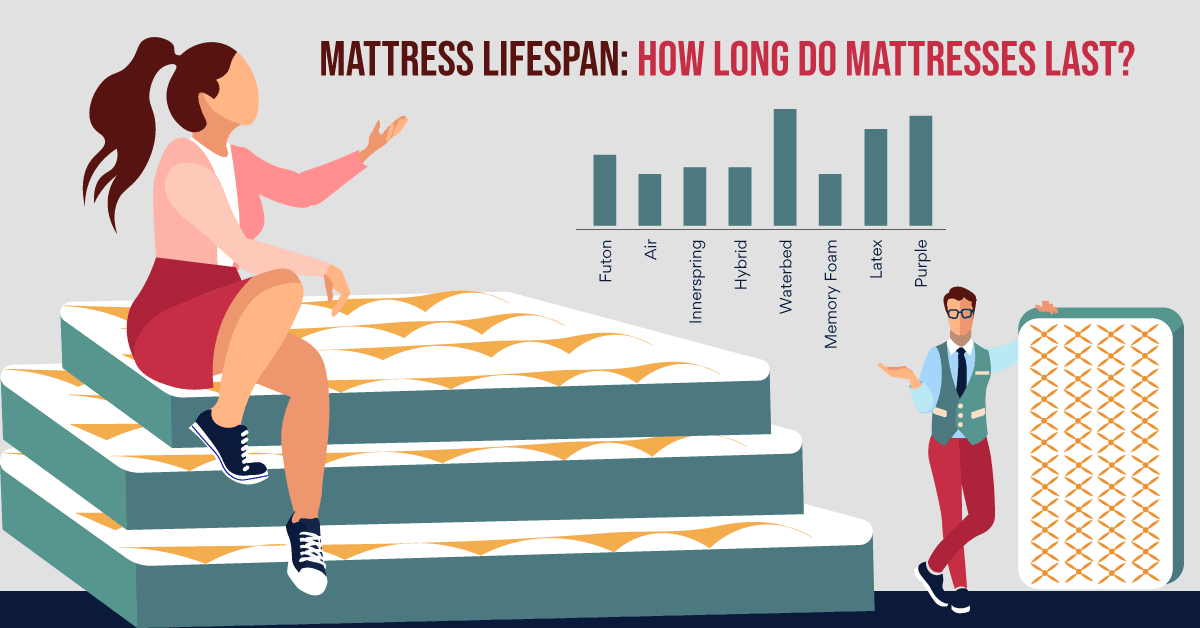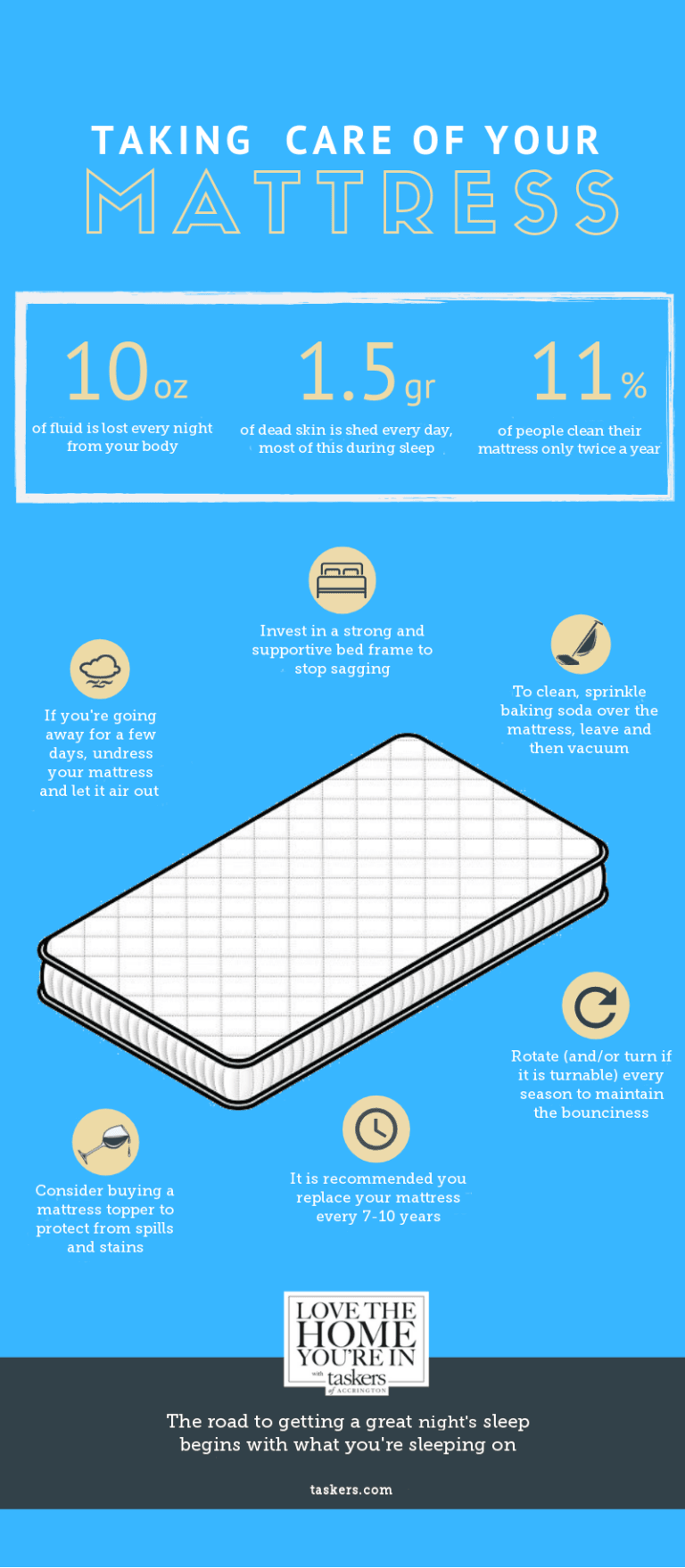If you grew up in a household where flipping the mattress was a regular chore, you may be surprised to learn that it's actually not necessary for all mattresses. In fact, flipping your mattress can do more harm than good in some cases. Here's why you should consider skipping this task altogether.Why You Shouldn't Flip Your Mattress
If you have a mattress that is designed to be rotated rather than flipped, it's important to know how to do it properly. This involves turning the mattress 180 degrees, so that the head of the bed becomes the foot of the bed and vice versa. This helps to distribute the weight and wear on the mattress evenly, preventing one side from becoming compressed or sagging.How to Properly Rotate Your Mattress
If your mattress is not meant to be flipped or rotated, there are other ways to maintain its shape and comfort. One option is to invest in a mattress topper, which can provide an extra layer of cushioning and support. You can also regularly vacuum and spot clean your mattress to remove any dust or stains.Alternatives to Flipping Your Mattress
Some mattresses, such as those with pillow tops or memory foam, are not designed to be flipped. Flipping these types of mattresses can cause them to lose their shape and support, leading to discomfort and potential back pain. It's important to follow the manufacturer's instructions for your specific mattress to ensure it stays in good condition.What Happens When You Can't Flip Your Mattress
If your mattress is meant to be flipped, you may be wondering how often this should be done. In general, flipping your mattress once every 6 months is sufficient. However, if you notice one side becoming more worn or saggy, you may need to flip it more frequently to maintain its comfort and support.How Often Should You Flip Your Mattress?
Whether you can flip your mattress or not, there are some general tips you can follow to help extend its lifespan. These include investing in a high-quality mattress protector to prevent stains and wear, rotating or flipping the mattress as needed, and avoiding jumping or standing on the bed, which can cause damage over time.How to Extend the Lifespan of Your Mattress
Even with proper care, mattresses will eventually wear out and need to be replaced. Some signs that it may be time for a new mattress include visible sagging or lumps, discomfort or pain when sleeping, and an increase in allergies or respiratory issues. If your mattress is over 8 years old, it's likely time to start considering a replacement.Signs You Need a New Mattress
When it comes time to replace your mattress, it's important to choose the right one for your specific needs. Consider factors such as your preferred firmness level, any specific health concerns, and your budget. Don't be afraid to test out different mattresses in-store or read reviews online to find the perfect fit.How to Choose the Right Mattress for Your Needs
There are many myths surrounding mattresses, from the idea that a firmer mattress is always better for your back to the belief that flipping your mattress every month is necessary. It's important to do your own research and consult with experts to separate fact from fiction and make informed decisions about your mattress care.Common Mattress Myths Debunked
In addition to following the manufacturer's instructions and rotating or flipping your mattress as needed, there are other ways to properly care for your mattress. Regularly vacuuming and spot cleaning can help remove dust and debris, and using a mattress protector can prevent stains and spills. It's also a good idea to air out your mattress periodically by removing all bedding and allowing it to breathe.How to Properly Care for Your Mattress
Why You May Struggle With Flipping Your Mattress

The Importance of Regularly Flipping Your Mattress
 When it comes to maintaining the comfort and longevity of your mattress, regular flipping is essential. Mattresses are designed to evenly distribute weight and pressure, but over time, they can become worn down and develop indentations. By flipping your mattress regularly, you can prevent these indentations from forming and extend the lifespan of your mattress.
When it comes to maintaining the comfort and longevity of your mattress, regular flipping is essential. Mattresses are designed to evenly distribute weight and pressure, but over time, they can become worn down and develop indentations. By flipping your mattress regularly, you can prevent these indentations from forming and extend the lifespan of your mattress.
Possible Reasons Why You Can't Flip Your Mattress
 So why do some people struggle with flipping their mattresses? There could be several reasons for this. For one, mattresses can be heavy and difficult to maneuver, especially for those with physical limitations. Additionally, some mattresses are designed to only be used on one side, making flipping unnecessary. However, the most common reason people struggle with flipping their mattresses is due to the design and construction of the mattress itself.
So why do some people struggle with flipping their mattresses? There could be several reasons for this. For one, mattresses can be heavy and difficult to maneuver, especially for those with physical limitations. Additionally, some mattresses are designed to only be used on one side, making flipping unnecessary. However, the most common reason people struggle with flipping their mattresses is due to the design and construction of the mattress itself.
The Impact of Mattress Design on Flipping
 In recent years, there has been a shift towards more complex and specialized mattress designs. While these designs may offer increased comfort and support, they can also make flipping the mattress a challenge. Some mattresses are made with multiple layers and varying firmness levels, making it difficult to determine which side should be flipped. Others have built-in pillow tops or memory foam layers, making them heavier and bulkier to flip.
Related Keyword: Mattress Construction
Main Keyword: Can't Flip Mattress
In recent years, there has been a shift towards more complex and specialized mattress designs. While these designs may offer increased comfort and support, they can also make flipping the mattress a challenge. Some mattresses are made with multiple layers and varying firmness levels, making it difficult to determine which side should be flipped. Others have built-in pillow tops or memory foam layers, making them heavier and bulkier to flip.
Related Keyword: Mattress Construction
Main Keyword: Can't Flip Mattress
What to Do If You Can't Flip Your Mattress
 If you are struggling with flipping your mattress, there are still ways to maintain its quality and comfort. One option is to rotate your mattress regularly, switching the head and foot of the bed every few months. This can help distribute wear and tear more evenly and prevent indentations from forming. Additionally, investing in a mattress topper can add extra cushioning and support to your mattress without the need for flipping.
Related Keyword: Mattress Rotation
Main Keyword: Can't Flip Mattress
If you are struggling with flipping your mattress, there are still ways to maintain its quality and comfort. One option is to rotate your mattress regularly, switching the head and foot of the bed every few months. This can help distribute wear and tear more evenly and prevent indentations from forming. Additionally, investing in a mattress topper can add extra cushioning and support to your mattress without the need for flipping.
Related Keyword: Mattress Rotation
Main Keyword: Can't Flip Mattress
Conclusion
 While flipping your mattress is important for maintaining its quality, it is understandable that some people may struggle with this task. By understanding the impact of mattress design and exploring alternative maintenance options, you can still ensure a comfortable and long-lasting sleep experience. Whether you choose to rotate your mattress or invest in a mattress topper, taking steps to care for your mattress will pay off in the long run.
While flipping your mattress is important for maintaining its quality, it is understandable that some people may struggle with this task. By understanding the impact of mattress design and exploring alternative maintenance options, you can still ensure a comfortable and long-lasting sleep experience. Whether you choose to rotate your mattress or invest in a mattress topper, taking steps to care for your mattress will pay off in the long run.

















































































































